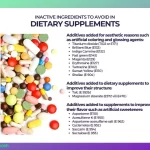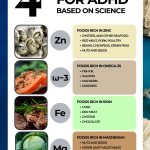TRANSFORM INTO A GREEN HERO IN JUST 5 MINUTES EACH DAY!
Receive your daily dose of eco-inspiration with the Green Connection newsletter. Discover the newest trends, technologies, and practical tools, all while being effortlessly entertained for free.
By clicking the button, you agree to our Terms of Use and Privacy Policy, including the use of cookies and the sending of communications.
Solar energy isn’t just the future—it’s here, brightening our days, literally and metaphorically. Let’s dive deep and shine some light on what makes solar energy the powerhouse it’s set to be in 2024 and beyond.
Understanding Solar Power
Sunlight to Power: Imagine the sun, a giant ball of nuclear reactions, throwing energy-packed photons our way. Solar energy taps into this flow, transforming sunny vibes into electricity or heat without anything getting lost in translation—well, almost. There are two main characters in this story: Photovoltaics (PV) and Concentrated Solar Power (CSP).
Photovoltaics (PV): These are your everyday solar panels, the ones you see on rooftops, silently turning sunlight into electricity through the magic of the photovoltaic effect【5†source】.
Concentrated Solar Power (CSP): A bit like the magnifying glass trick, CSP uses mirrors to focus sunlight into a beam so intense it can heat water to steam, driving turbines and generating power that way【6†source】.
Solar Power: The Evolution of Soaking Up the Sun
| 1954 | The birth of the modern solar panel. Bell Labs introduces the silicon photovoltaic cell. |
| 1980s | CSP plants start sprouting in the desert, harnessing the sun’s heat on a grand scale. |
| 2020s | Efficiency breakthroughs! Solar cells now convert more sunlight to power than ever before【8†source】. |
From humble beginnings with solar cells barely nudging 4% efficiency, we’re now playing in the 20% and beyond league, with tech advancements promising even more. And let’s not forget, the cost of going solar has taken a nosedive, making it a no-brainer for many.
Solar Power: Why It’s Hot
- Clean and Green: Solar energy is as neat as it gets—no emissions, no noise, just pure energy.
- Everywhere Under the Sun: From the Sahara to your backyard, if the sun’s shining, you could be generating power.
- Savings Galore: Lower utility bills, tax incentives, and feeling good about saving the planet? Yes, please.
The Environmental Win-Win
Solar isn’t just about powering homes; it’s a heavyweight in the fight against climate change. By cutting down on fossil fuel use, we reduce carbon emissions and take a big step towards a cooler planet. Plus, solar farms can coexist with agriculture, making them a buddy to biodiversity.
Solar Power Cash Benefits
| Lower Bills | Sunlight is free, so once you’re set up, the savings start stacking up. |
| Tax Incentives | Many governments offer sweeteners to help with the initial costs. |
| Increased Home Value | Homes with solar panels are hot property, often fetching higher prices. |
How Solar Panels Work: The Magic Behind the Glass
Ever wonder how those sleek panels on rooftops turn sunlight into electricity? It’s not wizardry—it’s science. At the heart of this process is the photovoltaic effect, a phenomenon discovered in 1839 but not put into practical use until over a century later.
The Photovoltaic Effect Unpacked
At its core, the photovoltaic effect is about converting light (photons) into electricity (voltage). Here’s the simple breakdown:
- Sunlight Hits the Panel: Each panel is made of layers of silicon cells, a material known for its semiconducting properties.
- Electrons Get Excited: Photons from the sun energize electrons in the silicon, causing them to move freely.
- Electricity Is Created: These free-moving electrons are directed into a flow, creating direct current (DC) electricity.
This process, silent and emission-free, happens as long as the sun shines on the solar cells. And with advancements in technology, it’s becoming more efficient year by year【8†source】.
Solar Power: Types of Solar Panels
| Monocrystalline | High (15-20%) | Homeowners with limited space |
| Polycrystalline | Medium (13-16%) | Those looking for a balance between cost and efficiency |
| Thin-Film | Variable (10-13%) | Large commercial spaces, flexible uses |
Each type has its pros and cons, but the choice often comes down to budget, space, and desired efficiency.
Solar Power Applications: Powering More Than Just Homes
Solar energy’s versatility extends far beyond residential rooftops. From powering entire communities to heating your shower water, the sun’s rays can be harnessed for a multitude of uses.
Solar Power: Electricity Generation
The most obvious use of solar panels is to generate electricity. This can be at the residential level, on commercial buildings, or even at utility scale, where vast solar farms feed electricity into the national grid.
Heating and Cooling
Solar thermal technology uses the sun’s heat to warm up water or air for residential and commercial heating. Additionally, solar energy can power absorption chillers, providing a sustainable way to cool buildings.
Off-grid Solutions
For remote locations, solar energy offers a lifeline, powering everything from schools and medical clinics to entire villages. It’s a game-changer for areas without reliable access to the main electricity grid.
Solar Power Innovative Uses
- Solar Water Pumps: Ideal for irrigation and providing clean water in remote areas.
- Solar Street Lights: Providing public lighting without the need for electrical wiring.
- Portable Solar Chargers: Keeping our gadgets charged on the go.
Solar energy is adaptable, scalable, and, most importantly, available almost everywhere. Its applications are limited only by our imagination and innovation. As we continue to explore and expand the ways we can harness the power of the sun, the future of solar energy looks brighter than ever.
Continuing from where we left off, let’s dive into the mechanics of solar panels and the exciting applications of solar energy that are transforming our world.
How Solar Panels Work: The Magic Behind the Glass
Ever wonder how a panel soaking in sunlight can power your home? It’s not magic; it’s science—specifically, the photovoltaic effect. Here’s a simplified breakdown:
- Sunlight hits the solar panel: Photons (light particles) bombard silicon cells within the panel.
- Electrons get excited: These photons energize electrons in the silicon, causing them to move, creating an electric current.
- Electricity is generated: This flow of electrons is harnessed as direct current (DC) electricity.
- Conversion to usable power: A device called an inverter transforms this DC electricity into alternating current (AC), powering your home.
| Silicon Cells | Capture sunlight and convert it into electrons. |
| Metal Frame | Provides durability and rigidity to the solar panel. |
| Glass Casing | Protects the silicon cells from the elements. |
| Inverter | Converts DC electricity into AC electricity. |
This process, though seemingly straightforward, is the result of decades of scientific research and technological advancement, bringing us to a point where harnessing the sun’s energy is more efficient and accessible than ever.

Solar Power Applications: Lighting Up the World
Solar energy isn’t just for powering homes. Its versatility is part of what makes it so revolutionary. Here are a few ways solar energy is used beyond the grid:
- Residential Use: Powering homes with rooftop panels.
- Commercial Buildings: Large-scale installations on offices and factories reduce operating costs and carbon footprints.
- Utility-Scale Solar Farms: Generating megawatts of power, these farms feed electricity into the grid, serving thousands of homes and businesses.
- Solar Heating and Cooling (SHC): Using solar energy to heat water and air in buildings, reducing the need for gas or electric heating.
- Portable Solar: From charging gadgets on the go to providing emergency power during disasters, portable solar panels are increasingly handy.
A Bright Future: Solar Power
Solar technology is ever-evolving, pushing the boundaries of what’s possible. Innovations like perovskite solar cells promise even greater efficiency at lower costs. Floating solar farms are popping up on bodies of water, conserving land and cooling the panels to boost efficiency. And let’s not forget solar roads, where photovoltaic cells are embedded into road surfaces, generating electricity from our streets and highways.
As we explore these advancements, it’s clear that solar energy is not just an alternative source of power but a key player in our future energy landscape. With each technological leap, we get closer to a sustainable, clean energy-powered world.
If you want o learn about our consultancies in Portuguese language, click here.
Want to Become a Sustainable Interior Designer?
Elevate Yourself to Sustainable Design Mastery. Complete our intensive training and craft sustainable spaces with the expertise of a true professional.




